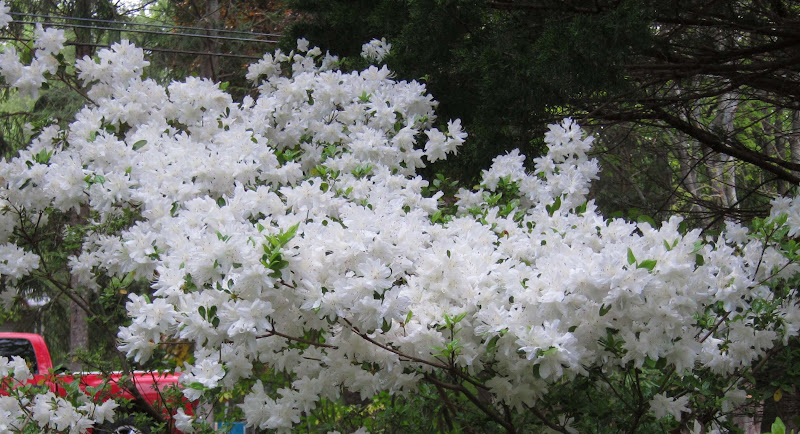
Every spring I am amazed at the colors. Part of it is how gray winter can be and the contrast that spring brings with it. But I can't get over how brilliant and bright the colors are. They seem faked. If I were to see these same values in a photo or in a painting I would find it hard to believe.

In the above image of the Azalea bushes the blossoms appear to be pure white. The actual color is a very light blue as shown in the pallet above.

The above image of the orange Poppy, the color of the peddles are quite vibrant with minimal influence of the sun. Note the greens of the new grass behind the Poppy, something else that is usually on seen in Spring time. The light blue in the pallet is from the hairy texture of the pod.


Here the Poppy's peddles are influenced by the bright sun light that are making them glow with yellow and orange highlights. Note the hairy covering of the pods. They are heavily influenced by the sun. Compare the color swatches of the two Poppy images or import the images into GIMP or Photoshop and look at how varied the colors are on the hair of the pods using the color picker.

Being observant of the world around us is a great way to understand why things are the way they are. Knowing the history and mechanics of what we paint or that of similar subjects we will be better suited to make our art seem real. This is why observational studies are integral to art and is at the foundation of art programs. Before we can paint what we imagine, we need to know how to paint what we see.
Studying wildlife and nature we will notice patterns, both in visual appearance and in the forms and functions of the subjects (if we pay attention). Knowing the why behind it will help in applying those attributes to fictional characters during character or concept design. What is the purpose for the patterns on wild cats? ...for camouflage in most cases. Questions like that lead us in applying those attributes from the real world to fictional characters or to scenic paintings.
Try to take notes of what you see or at least mental notes. If you have the time sit and do a quick sketch of what catches your eye and document any pertinent details or characteristics. Doing so will help in remembering what you have seen. The goal is to create a mental library of sorts that we can refer to and apply to our paintings minimizing the need for photo reference. Of course with every project we all sit down with reference images at some point so don't think you have to rely on only your memory.

A side benefit of taking reference photos are the unintended shots like the one above. If I went out to take a photo of a hummingbird, I would spend days waiting to get a good shot, but this one flew right in front of me when I was taking photos of the Poppies. Her wings are moving so fast that the camera couldn't capture them. To note, it is a female because the males have a red throat.
-Steve

No comments:
Post a Comment